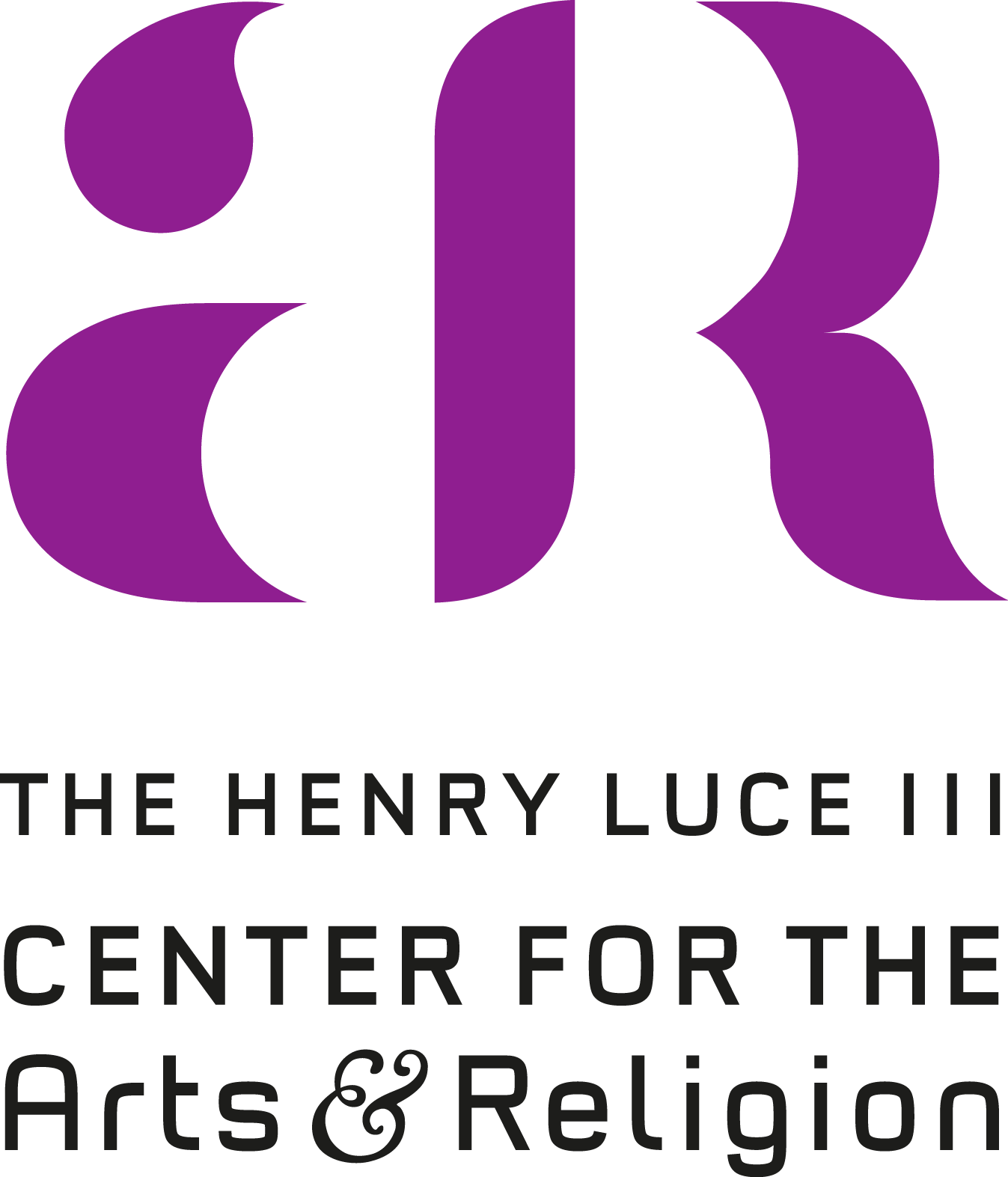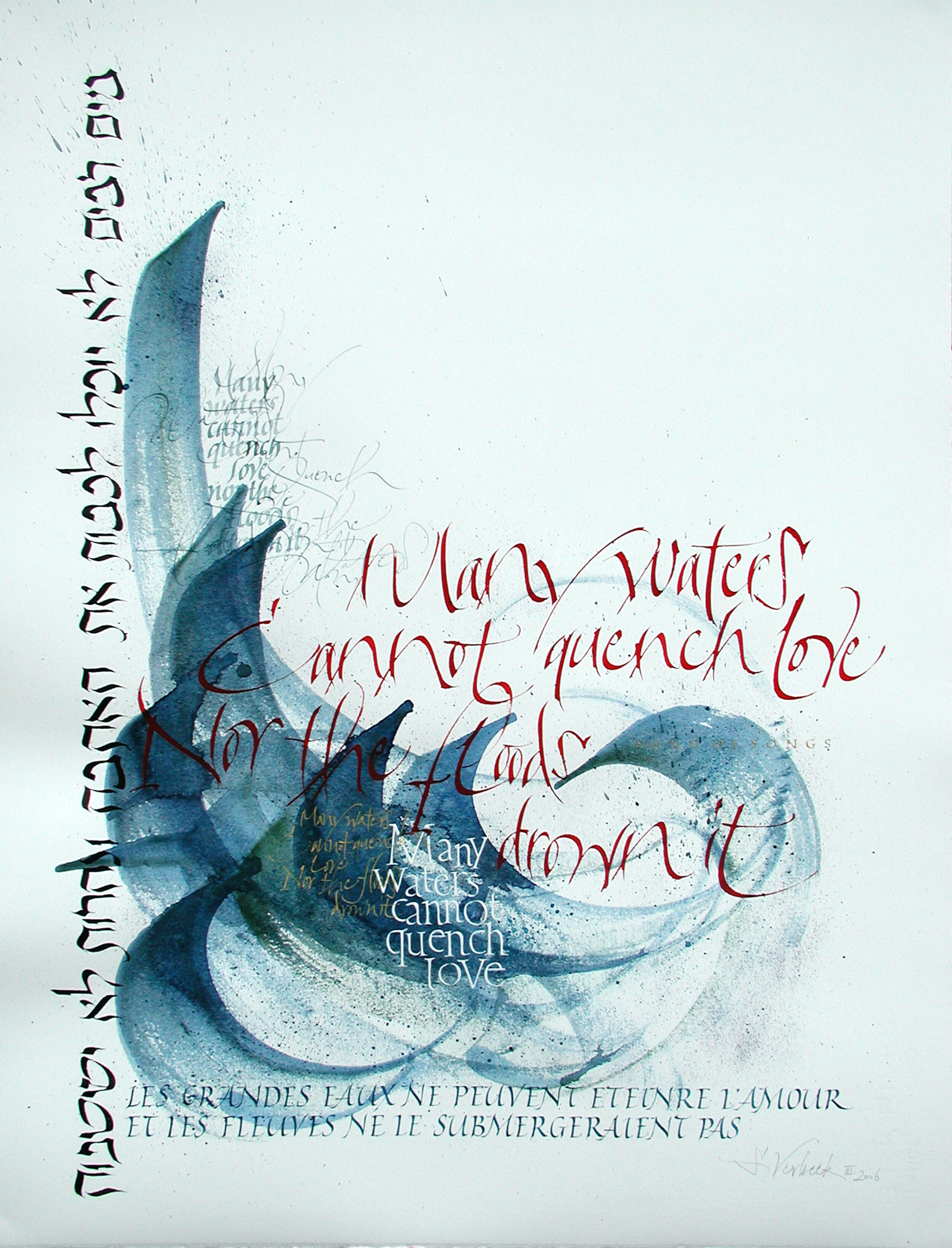Ann Hechle
Be Still Then and Know that I Am God: An Exploration of Psalm 46, 1988.
This piece has two variations:
Fitzwilliam Museum, Cambridge (above): 12¼ x 16”
Houghton Library, Harvard University (at left and below): 4 sheets, 7 x 4“ or smaller.
Calligraphy on vellum
Hechle’s series of variations on Psalm 46:11—“Be still then and know that I am God”—came during a years-long period of exploring new potentials of calligraphic art to express sound, rhythm, and other aural aspects of language. Her renderings of this brief but theologically potent line explore not only the variety of ways it could be orally performed, but also mine its poetic and rhetorical ambiguities.
Psalm 46 displays the psalmist affirming his (or her) deep faith in God as a warrior who will fight on Israel’s behalf in times of trouble. The psalm inspired a famous hymn by Martin Luther, best known in English as “A Mighty Fortress is Our God.” Amidst the psalmist’s expression of trust, God’s own voice interjects:
“Be still, and know that I am God!
I am exalted among the nations,
I am exalted in the earth.”
The phrase “be still” could also be rendered “Cease!” or “Rest!” It remains unclear to whom God speaks here. Is this God telling Israel to cease from trusting in military might and instead trust in Him—an exasperated deity admonishing his people? Or is this God booming to the warring foreign nations to lay down their arms against Her people? Further, when the psalmist brings in God’s voice, is this hyperbolic trust already present or is the psalmist hoping to one day possess such faith?
By varying the boldness, size, and layout of these words, Hechle suggests the many ways this line might be read aloud, much like an actor rehearsing their lines in different ways to explore different tones. An emphasis on “STILL” suggests a bold command to stop, slow down and listen, perhaps an immediate ceasefire to bloodshed. An emphasis on “KNOW” shifts the focus to something perhaps more difficult: slowing down enough to actually see the subtle presence of God at work in the chaos of the world.
Hechle’s variations also explore the nuances of this line by finding coincidences in the letters’ shapes and words’ spelling. In one variant, she gilds the letter “I” in “STILL” and in “I AM GOD,” and lines them up vertically. This may suggest that in the stillness of the self, we find God—a well-known idea in Christian spirituality. Maybe it suggests that stillness and steadiness is the essence of God’s own self. Or maybe this evokes Elijah hearing God in, to use the King James Version’s powerful rendering, the “still small voice” (1 Kings 19:12).
Another coincidence Hechle explores is the near-symmetry of the word “GOD”, as the curves of the “G” and the “D” echo those of the “O.” Perhaps: God is circular, ever-moving. Or: God is orderly and structured, unlike the chaos of the world’s warring nations. Or: the three letters in “GOD,” distinct yet visually harmonious, echo the Trinity.
Hechle’s variations record her exploring these words: their visual shapes, their meanings, and their oral performance. She invites us to ponder these words for ourselves, to repeat them as she has done. As she puts it, “exploring words can also be a way of exploring ourselves.”
—Homrighausen
Further Reading:
Heath, Sophie. “Ann Hechle: Calligraphy as Experiment, Expression, and Vocation.” Crafts Study Centre, 2004.
Hechle, Ann. “Aspects of Language: A Visual Exploration of Poetry.” In Head, Hand, Heart: Reflections on a Practice. Farnham: Crafts Study Centre, 2013.
———. In the Beginning: A Journey into Meaning through the Making of a Calligraphic Work. Self-published, 2020.
———. Lavender’s Blue Dilly-Dilly: A Collection of Newly Commissioned Work. Harleston, Norfolk: Michael Taylor, 1988.
———. “What Is Calligraphy? Where Is It Going? And Is It Going to Go?” The Scribe (Winter 2009): 2–5.
———. “Words as Images.” In Advanced Calligraphy Techniques: Ideas in Action, edited by Diana Hoare, 41–45. Secaucus, NJ: Chartwell Books, 1989.
Read more:
Biblical Poetry and the Art of Repetition
Jonathan Homrighausen







